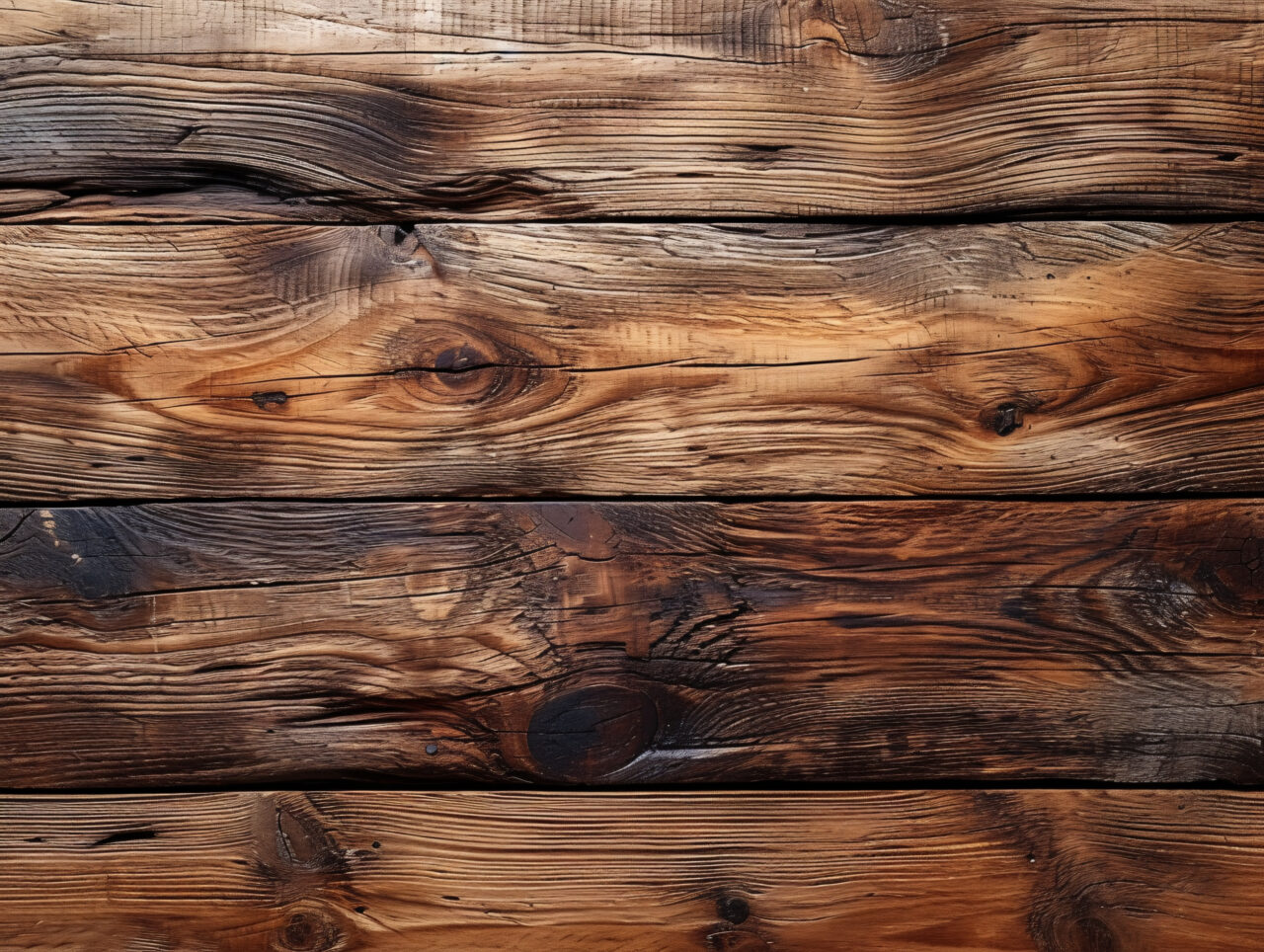Gaps in wooden floors can be both a common occurrence and a source of concern for homeowners. When you notice gaps in your wood floors or floorboards separating, it’s natural to wonder whether this is normal or you should be worried. This comprehensive guide will explore the world of wooden floor gaps, their causes, and when you should genuinely be concerned about them.
Understanding the Nature of Wooden Floor Gaps
Before diving into when you should be concerned, let’s first understand the nature of wooden floor gaps. The expansion and contraction of wood are entirely natural processes driven by variations in moisture levels. Gaps in wooden floors are normal and occur when wood loses its moisture content. Some wood floors intentionally incorporate gaps for aesthetic purposes, such as achieving a rustic or chevron pattern.
Wood expands and contracts as it absorbs or releases moisture, and this natural movement is inherent in all wooden floors. The critical factor is the extent and visibility of these gaps and their location within the room. Several factors can influence the size and severity of these gaps, and it’s essential to consider them when assessing your floor’s condition.
Factors Affecting Gap Size and Severity
- Natural Gaps: Every wooden floor should have gaps for natural expansion and contraction. Without these gaps, tension can build up as boards push into each other, potentially causing buckling. A small expansion gap around the perimeter is usually sufficient for most floors. However, in larger spaces exceeding 100 square meters, more than perimeter expansion gaps may be needed, and gaps within the floor’s surface must be allowed. This applies to both solid and engineered wooden floors.
- Poor Workmanship: One of the primary causes of significant gaps in wooden floors is poor craft during installation. Boards that are well-fitted, properly joined, and made from low-quality materials can result in unsightly gaps. This issue is entirely preventable by selecting an experienced artisan and investing in high-quality materials. Parquet floors, in particular, are prone to poor fitting, leading to gaps if not installed correctly.
- Underfloor Heating: If your home has underfloor heating, it can impact your wooden floors. The heating system can cause the wood to dry out and shrink, leading to gaps. Proper installation, maintenance, and heating system monitoring can help mitigate this issue.
- Moisture Issues: Moisture is a significant factor in the health of wooden floors. If the subfloor is consistently wet or prone to moisture problems, it can lead to excessive expansion, warping, and cupping, ultimately resulting in gaps. Ensuring that the subfloor has the right moisture levels prevents this issue.
- Wood Species: The type of wood you choose for your flooring can also influence gap formation. Some wood species, such as pine, tend to develop larger gaps, particularly on ground floors. This occurs because the subfloor underneath can cause fluctuations in moisture levels, exacerbating gaps. However, it’s important to take time to fill these gaps, as restricting further board movement can damage the boards. For those looking to minimize gaps, exotic wood species like Ipe or Sucupira are ideal due to their naturally high oil content and lower moisture absorption rates.
- Maintenance: Regular maintenance and care are crucial for preserving the condition of your wooden floor. Proper sealing and finishing can help prevent gaps from worsening over time.
- Gap Filling: If you find gaps in your wooden floor that need addressing, solutions are available. Pine slivers, for example, can fill gaps between floorboards, providing a polished finish. These slivers are wedges made from reclaimed floorboards and can quickly and effectively fill gaps.
Taking Action to Prevent and Address Gaps
Understanding the causes of gaps in your wooden floor is the first step in determining whether you should be concerned. While small, inconspicuous gaps at the floor’s edges are generally not a cause for alarm, monitoring them for any changes is essential. Larger gaps may require attention, especially those in the middle of the floor or near seams.
Here are some steps you can take to prevent and address gaps in your wooden floor:
- Choose a Skilled Craftsman: Select an experienced artisan for your flooring installation to avoid gaps resulting from poor artistry. A skilled professional will ensure that the boards are properly fitted and joined, reducing the likelihood of gaps.
- Monitor Moisture Levels: Regularly check the moisture levels of the wooden floor and the subfloor. Maintaining proper moisture levels can help prevent excessive expansion or contraction.
- Consider Wood Species: When choosing the type of wood for your floor, consider the characteristics of different wood species. Exotic woods with lower moisture absorption rates can resist gap formation.
- Maintain Underfloor Heating: If you have underfloor heating, ensure it is installed correctly and maintained to minimize its impact on the wood.
- Regular Maintenance: Implement a routine that includes proper sealing and finishing to protect your wooden floor from moisture fluctuations and gap formation.
- Gap Filling: If you notice gaps developing, consider using pine slivers or other gap-filling materials to fill the spaces between floorboards. This can enhance the appearance of your floor and prevent gaps from worsening.
Conclusion
In conclusion, gaps in wooden floors are common, primarily driven by the natural expansion and contraction of wood due to changes in moisture levels. While some gapping is normal, monitoring these gaps’ size, location, and severity is essential. Small, inconspicuous gaps around the edges of the floor are typically not cause for concern. However, larger gaps, especially those caused by poor craft, subfloor moisture issues, or improper wood species selection, should be addressed to maintain the integrity and aesthetics of your wooden floor.
Prevention is often the best approach to gap management. By selecting the right craftsman, monitoring moisture levels, choosing suitable wood species, and implementing a proper maintenance routine, you can minimize the likelihood of significant gaps developing in your wooden floor. If you do encounter gaps, consider using gap-filling materials to restore the floor’s appearance and prevent further issues.
In summary, understanding the causes of gaps and taking proactive steps to address and prevent them will help you maintain the beauty and longevity of your wooden floor. If you need more clarification about the gaps in your floor or need professional guidance, consult with a flooring specialist to assess the situation and determine the best course of action for your specific circumstances. Your wooden floor can continue to be a source of pride and beauty with the right care and attention.
Enhancing your living space has never been easier with FloorPup! Explore our wide selection of hardwood flooring, get expert floor care and maintenance tips, and find inspiration in our gallery. Our professional floor fitters, skilled driveway pavers, and reliable carpet repair services ensure top-quality results. Learn more about our commitment to quality on our about us page. Visit FloorPup and transform your home today!
FAQS
Why do floors gap?
Floors can develop gaps primarily due to fluctuations in temperature and humidity. For instance, wood flooring tends to expand in humid conditions and contract in drier ones, leading to gaps between the planks. Poor installation, subfloor issues, or inadequate acclimatization of materials can also contribute to floor gaps. Regular maintenance and climate control are essential to minimize and prevent these gaps.
What size gap for flooring?
The suggested gap size is typically 1/4 to 3/8 inch (6 to 9 mm). This area allows for the flooring’s natural expansion and contraction owing to temperature and humidity fluctuations, guaranteeing a stable and long-lasting installation.
How do you close floor gaps?
To address floor gaps, you have several options based on their size and location. Small gaps in hardwood or laminate flooring can be filled with wood filler or putty. You may need to replace damaged boards for larger gaps or those between floorboards. Using area rugs or carpets can also effectively cover minor gaps. Closing these gaps improves the appearance and helps prevent issues like drafts and debris accumulation.
In what dimension does the wall meet the flooring?
Importantly, there is a gap, or expansion gap, between the wall and the floor.
It allows the flooring to expand and contract as the temperature and humidity change, preventing damage. Usually, this gap is about 1/4 to 1/2 inch wide and is covered by baseboards or trim for a neat finish.


